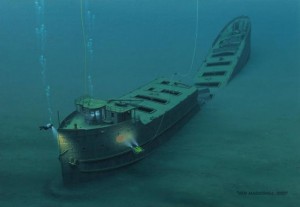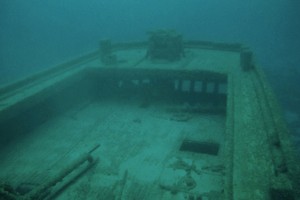 The Great Lakes are a beautiful series of lakes in the northern United States that for all intents and purposes might as well be the ocean. They are wonderful places for all kinds of recreation, but they are also working lakes, because the Great Lakes handles shipping from all over the world. That said, the summers can be very busy on the Great Lakes, but the winters are a very different thing. Most of the Great Lakes ice over in the winter, or at least enough to make travel on them pretty much impossible. Since the winters are long in the north, the shipping companies try to get every bit of use out of the lakes that they can, and that can bring hazardous and even tragic results.
The Great Lakes are a beautiful series of lakes in the northern United States that for all intents and purposes might as well be the ocean. They are wonderful places for all kinds of recreation, but they are also working lakes, because the Great Lakes handles shipping from all over the world. That said, the summers can be very busy on the Great Lakes, but the winters are a very different thing. Most of the Great Lakes ice over in the winter, or at least enough to make travel on them pretty much impossible. Since the winters are long in the north, the shipping companies try to get every bit of use out of the lakes that they can, and that can bring hazardous and even tragic results.
November is known for screaming into the area, and with it come the Gales. I suppose that to most people, the thought of a dangerous storm of a lake seems a little odd. Yes, if it were a small boat, just about any storm could make for a dangerous situation on the lake, but when you are a big ocean going vessel or ore boat, you wouldn’t think a storm on the lake would be a big deal. You would find that you are wrong on that one though. Over the years, many lives and many ships have been lost on the Great Lakes when the ship was out on the water just a little too late in the season.
Sometimes, it would be a captain who took a chance on the weather, and got himself into trouble, but other times, it would be a situation when the November Gales fooled them and showed up early. Of course, those types of accidents were much more common before all the the weather tracking equipment that is available these days. Some of the deadliest storms were 1860 when the Lady Elgin sank, killing over 400, the 1835 Lake Huron “Cyclone” which claimed 254 lives, the 1913 Great Storm which claimed 244 lives, the 1880 Alpena  Storm which killed about 100, the 1940 Armistice Day storm which took 66 lives, the 1916 Black Friday storm which killed 49, the 1958 sinking of the Bradley with 33 lives lost, the 1905 Blow whish killed 32, the 1975 sinking of the Edmund Fitzgerald which took 29 lives, the 1966 sinking of the Morrel which left 28 dead, and the 1894 May Gale which killed 27. These are big storms with big loss of life. On our small lakes, if a summer brings a couple of drownings, we cnsider it a bad year. I can’t imagine what it would be like to lose so many lives all at once on a lake, and yet it is a possibility those in the shipping businesses on the Great Lakes live with every year.
Storm which killed about 100, the 1940 Armistice Day storm which took 66 lives, the 1916 Black Friday storm which killed 49, the 1958 sinking of the Bradley with 33 lives lost, the 1905 Blow whish killed 32, the 1975 sinking of the Edmund Fitzgerald which took 29 lives, the 1966 sinking of the Morrel which left 28 dead, and the 1894 May Gale which killed 27. These are big storms with big loss of life. On our small lakes, if a summer brings a couple of drownings, we cnsider it a bad year. I can’t imagine what it would be like to lose so many lives all at once on a lake, and yet it is a possibility those in the shipping businesses on the Great Lakes live with every year.


2 Responses to Great Lakes Gales